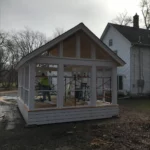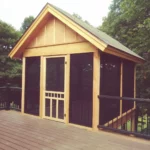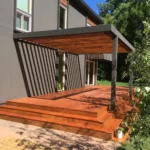Brick patio ideas have become increasingly popular in outdoor landscaping. They offer an adaptable and attractive option for creating well-designed outdoor spaces. Whether you want to create a cozy seating area or a spacious dining space, there are endless design possibilities with brick patios.
Brick patio designs range from traditional herringbone patterns to modern interlocking pavers that evoke elegance and sophistication. To add visual interest or functionality, you can choose different patio surfaces with fire pits and dining tables. Brick offers warmth and character while blending with natural elements.
Today’s article will explore design options using bricks, patterns, and colors that suit your style preferences. You can also find suggestions and tricks for maximizing your outdoor living space using these materials. Keep reading if you want a small, intimate gathering space or a large entertainment area ideal for hosting outdoor parties.
8 Brick Patio Ideas on a Budget
Are you looking to create a beautiful brick patio on a budget? Start by considering the location, size, and shape of your patio. Then, have fun choosing the design from different patterns and colors to complement the structures and materials.
Once you’ve built it, maintaining the patio is essential for its longevity. Here are some tips to help you design and care for the perfect brick patio in your backyard.
-
Simple Straight-Set Brick Design
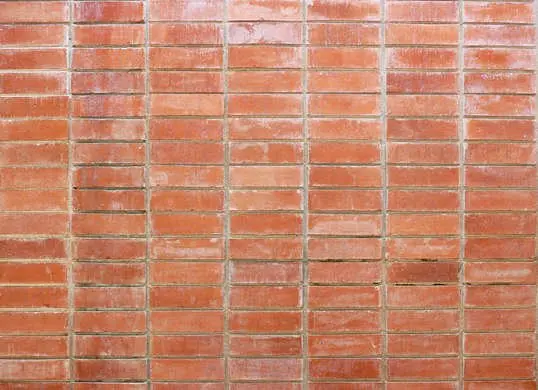

For a classic and effortless design, consider the simple straight-set brick pattern. It involves laying bricks in horizontal rows without offset, creating a grid-like appearance that exudes timeless elegance.
This pattern is easy to install as it requires simple measurements and eliminates the need for cutting individual bricks. Opt for a vertical straight set if you have a small patio and want to create the illusion of spaciousness.
You will achieve a striped effect when you place bricks vertically instead of horizontally. It will add visual interest while maintaining the simplicity of your small outdoor area.
-
Use Running Bond to Offset the Usual
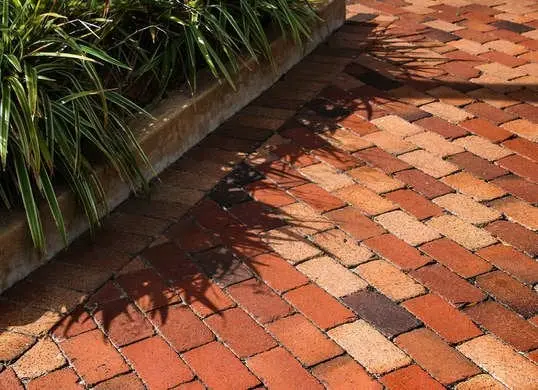

With their versatility and visual interest, Running Bond brick patio patterns add interest to classic and contemporary patio designs. The traditional 50 percent offset creates rows of bricks laid horizontally, with each joint lining up with the center of the brick above and below it.
You can opt for the one-third offset pattern for a more modern twist. In such a pattern, each joint is offset by 33 percent to create diagonal lines across the patio. Using partial bricks helps fill spaces where full ones don’t fit neatly into place.
An angle grinder with a diamond blade allows you to cut bricks accurately before placement.
-
Give Movement Using Herringbone
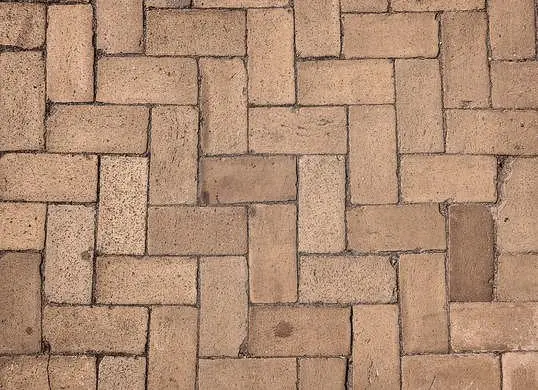

Adding a sense of movement to your brick patio with the herringbone pattern is a traditional and timeless design. With an interlocking L‑shape, the bricks create the illusion of movement. In addition to adding energy to your outdoor space, this visually dynamic pattern is also structurally durable.
An interlocking layout provides a robust and impact-resistant patio surface. A herringbone pattern adds movement to your outdoor residence area because of its strength and graphical appeal, and it can withstand heavy lawn equipment without buckling.
-
Consider a Whorled Pattern
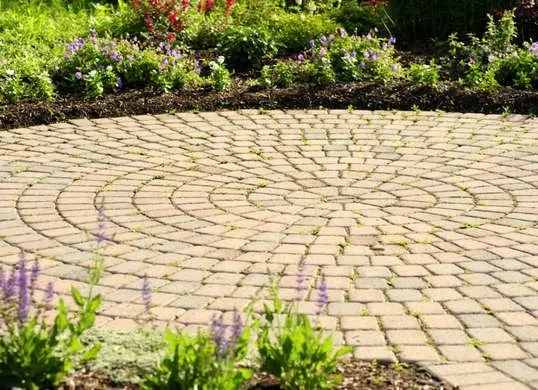

You can create a focal point at the center of your patio with a whorled pattern. This pattern works well with round patios and accentuates their shape.
Remember that this intricate pattern requires more measuring and cutting than the above mentioned patterns. Adding additional visual interest to a concentric circle of vertically or horizontally laid bricks is easy, with slivers of brick filling in between them. Try out different brick colors and sizes.
-
Edge Garden Beds
Brick edging enhances the look of garden beds. It adds cohesion to your patio and protects your plants. You should keep trampling feet away from the beds to prevent soil compaction.
Additionally, brick edging is a barrier against pests like snails and slugs, which struggle to crawl up and reach the foliage. Choose brick edging for an attractive and functional addition to your outdoor space.
-
Smooth Brick Exterior Siding Transition
Brick is a natural choice for the exterior. Compared to wood or engineered wood products, it offers durability and resistance to rot, dents, and termites. A smooth brick exterior siding transition can create a bold, colonial-inspired look, seamlessly connecting your home to the patio.
If re-siding is outside your budget, consider adding brick doorway surrounds or columns for a cohesive look at an affordable price. These additions can enhance the aesthetic appeal of your home while maintaining its integrity against external elements.
-
Pick Coordinating Brick Colors
Choosing a brick color for your patio should create harmony with the other exterior elements of your home. With these colors, you can achieve a monochromatic yet not overwhelming palette with rusty-red brick siding, light red bricks, or burgundy bricks.
For homes with multi-colored exteriors, choose light or dark neutrals like gray, tan, or beige to contrast the patio and the home. To add variety in color to your patio design, try alternating bricks in complementary tones. In one design pattern, these tones can be red and pink or a combination of shades.
-
Mix and Match Complementary Materials
Brick is a versatile material that can easily be paired with other complementary materials. A brick patio blends seamlessly with different exteriors, whether wood, stone, or metal.
Brick and wood elements like pergolas give your outdoor space a rustic feel. You can pair it with wrought-iron fences or steel furniture to provide a more industrial feel. Find out how to mix and match materials to create unique design aesthetics.
Benefits of Brick Patios
Brick patios have many benefits. They never fade in color over time. If you need to replace some bricks, dryË—laid bricks are uncomplicated. In addition to adding an authentic and high-quality look to any outdoor space, bricks are also durable, thus ensuring your patio will last for years. A brick’s customizable nature also offers endless pattern options for any landscape design preference.
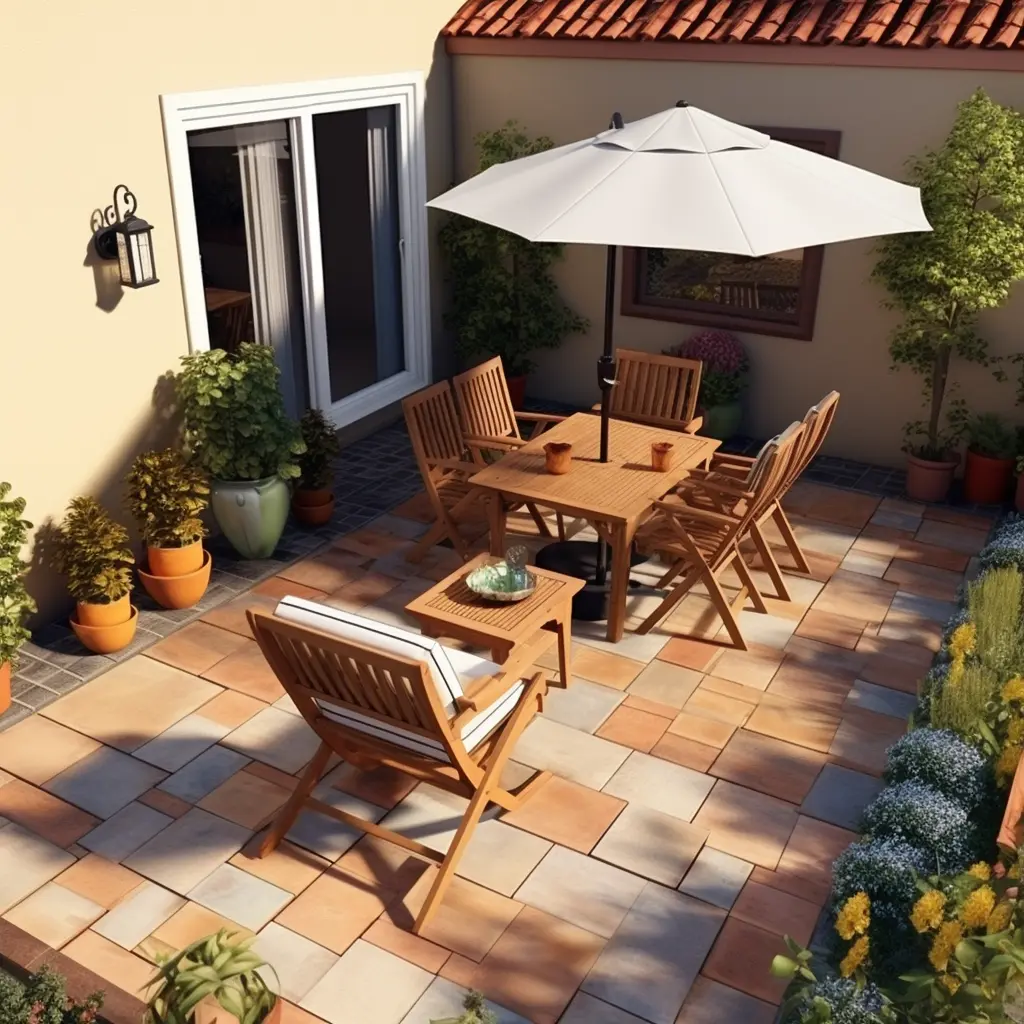

Brick Patio Cost
Materials are typically affordable in terms of the cost of a brick patio. The main expense is paying for installation by masonry contractors. To ensure a fair price, obtaining estimates from local professionals is recommended. Costs can vary depending on the type of brick and pattern chosen, with labor included in the overall per-square-foot calculation.
A quick way to get an idea of mid-range costs is to use this formula:
Length x width x overall cost per square foot = estimated patio cost.
Frequently Asked Questions
Q. How Can I Make My Brick Patio?
Ans.  It’s always best to get professional help whenever you are willing to make a brick patio. Companies offer custom patio solutions tailored to your specific needs. DIY is not a good option, as things can get pretty messy. Nevertheless, if you love mess, then follow the following instructions.
Start by planning the size based on the available space. Dig a hole, then create a flat base with gravel for drainage. Lay the bricks in the sand and tamp them down evenly. Fill cracks with sand and landscape around the patio for a finished look. Remember to check local building codes and restrictions before starting your project!
Q. Are Brick Patios Durable and Long-Lasting?
Ans. Brick patios are highly durable and long-lasting. They can withstand heavy usage and loads thanks to their natural composition of clay and shale. The firing process in kilns further enhances their strength. Unlike concrete, bricks don’t require a sealer for protection against the elements.
However, selecting bricks with appropriate frost resistance levels is essential, depending on exposure conditions. With proper care and maintenance, these patios can be a reliable outdoor living space option for many decades.
Q. What Is the Maintenance like for a Brick Patio?
Ans. A patio made from brick needs to be maintained to keep it looking beautiful and to ensure its durability. Since the joints between the bricks are weak, regular sweeping or blowing away of debris and weed-eating is essential. Pressure washing can help remove mildew, grime, and residue buildup. Applying polymeric jointing sand keeps the bricks in place while preventing weed growth.
You should seal your brick patio every one to two years to protect it from the outdoor elements and simplify cleanup. Follow the manufacturer’s instructions for specific maintenance routines based on your brick type and local climate.
Conclusion
In conclusion, you can try straight-set, Running Bond, and herringbone patterns to design your brick patio. Use bricks as edging for garden beds, too! Coordinate colors and explore complementary materials for a unique look.
Brick patios are the ideal choice if you’re looking for the perfect outdoor space to enhance your home’s living area. The installation process for this patio is simple, but estimating costs can be challenging. These patios are popular choices among homeowners because of their timeless elegance.
Brewer Built LLC is here to help you explore different styles and designs that suit your preferences. Choose from various patterns, colors, and materials to create a cohesive look that will last for years. Trust us as your premier general contractor in Lake Minnetonka for all your outdoor remodeling needs!
“All Photo Credit: istockphoto.com“

